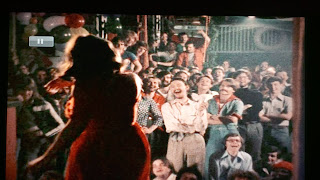The last time I read like I have been reading since April was in the midst of my high school career when, near the end of Grade 10, I relaxed my Grade 9 habits and dove headlong into a spring break-up of books, most of them from Wednesday night buying sprees at Oakridge with my mom.
There was a little bookstore next to Kelly's Records, back when the mall was open-aired, and it was there that I chose books by Kurt Vonnegut, Jr., Herman Hesse, Erma Bombeck, Andre Gide and Jean-Paul Sartre. None of these were authors who came up in any of my high school classes, though I remember Mr. Brooks cocking an eyebrow when he walked into our English 11 Fiction class and noticed me reading Richard Howard's 1970 translation of Gide's The Immoralist (1902).
One book I never got around to reading but knew of through numerous mentions in Forewords and Afterwords was Sartre's first novel, Nausea (1938). Nor had I ever come upon a copy that didn't look like it had been a road pillow for Neal Cassady, or someone inspired by him. Only recently did I happen upon an uncracked copy at Tanglewood, and so I snapped it up!
The most oft-quoted line in Nausea comes on Page 14 of Lloyd Alexander's New Directions translation, where Sartre writes: "Three o'clock is always too late or too early for anything you want to do." But the turning point, as it were, comes four pages later -- at "5:30" of the same day:
"Things are bad! Things are very bad: I have it, the filth, the Nausea. And this time it is new: it caught me in a cafe. Until now cafes were my only refuge because they were full of people and well lighted: now there won't even be that any more; when I am run to earth in my room, I shan't know where to go."
Three pages later, in an effort to break the spell, the protagonist asks cafe server Madeline if she could put on that "rag-time" song he likes, the one he "heard American soldiers whistle ... in 1917." After consulting with the card players nearby (who don't like music while they are playing), she cranks up the phonograph and the protagonist begins to "grow warm ... feel happy."
Shortly after that, Sartre writes:
"A few more seconds and the Negress will sing. It seems inevitable, so strong is the necessity of this music: nothing can interrupt it, nothing which comes from this time in which the world has fallen; it will stop of itself, as if by order. If I love this beautiful voice it is especially because of that: it is neither for its fulness nor its sadness, rather because it is the event for which so many notes have been preparing, from so far away, dying that it might be born."














































